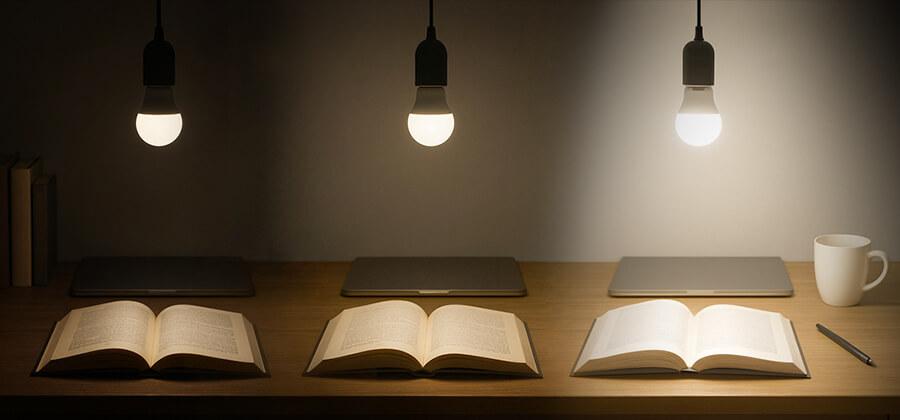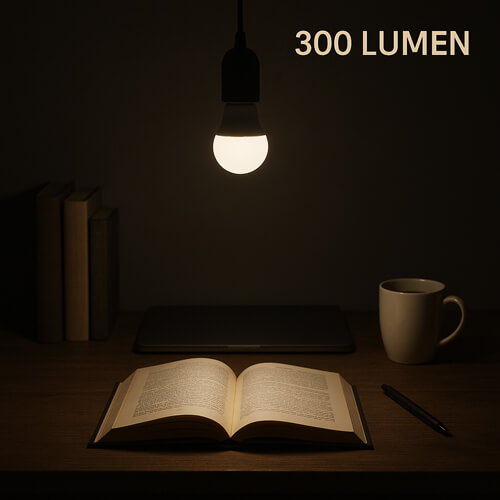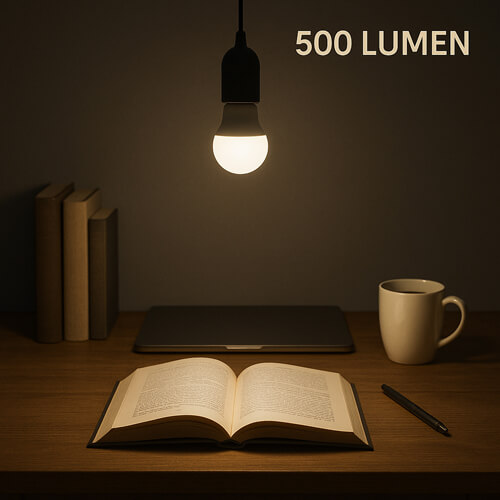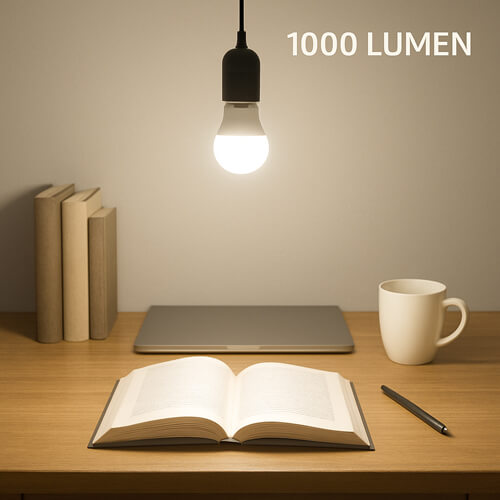
Explained in detail: Luminous efficacy of light sources

The luminous efficacy of light sources- An essential measurement value for determining energy efficiency.
Energy lables are a good guideline, but to be able to truly compare the engergy efficiency of light sources another value is much more suitable – which one that is, and which factors influence this value, will be explained by us in this blog post.
Luminous efficacy - The efficiency of a light source
Energy labels are quite useful for getting a rough idea of the energy efficiency of an electrical appliance or light bulb, but on closer inspection, these ratings are not very meaningful. The different labels in particular can quickly mislead customers. Until March 2021, the valid classifications ranged from A+++ to D, after which all appliances were classified from A to G. However, not every manufacturer adheres to this, because A+ still sounds better than energy efficiency class D. An old A+++ would be A or B according to today's classification, and the former A is now only E or even F. However, that is not the subject of today's article, so we will focus on the really interesting value that provides a much better and more accurate comparison: the light output of a light source. As always, explained step by step.
What does luminous efficacy mean?
The luminous efficacy indicates how efficiently a light source works – i.e. how much light it produces in relation to the electrical energy it consumes. To measure this, the amount of light is expressed in lumens (lm), while the energy consumption is measured in watts (W). The resulting value is called lumens per watt (lm/W). Luminous efficacy is therefore an objective value that can be used to compare different light sources. This information helps you identify energy-efficient lamps and make an informed choice – whether at home, in the office or in public buildings. A high lm/W value therefore means more light and lower power consumption. The higher this value, the more efficient the lamp. Unfortunately, luminous efficacy is not a mandatory specification, so manufacturers of less efficient light sources are reluctant to display it on product packaging. However, as the light output can be easily calculated by dividing lumens by watts, it can be easily determined yourself if necessary. The luminous flux (lumens) and power consumption (watts) are mandatory information according to EU regulations. Nevertheless, some manufacturers provide this information voluntarily, especially for particularly efficient products.
Differences in light output between different light sources
Different light sources have different luminous efficacy, which means that some lamps produce more light with less energy consumption than others. This means that either a lower wattage can be used with the same number of light sources, or fewer lamps are required to achieve the same amount of light with a comparable wattage of a single light source. The values can vary significantly.
A classic example is the incandescent light bulb, which creates a warm, pleasant lighting atmosphere but, compared to more modern lamps, provides relatively little light while consuming a lot of energy. A typical incandescent bulb has a luminous efficacy of around 12 lumens per watt (lm/W). This means that it produces only a small amount of light for each watt of power consumed. Halogen lamps are an improved form of the incandescent light bulb and provide slightly more light with similar energy consumption. They achieve around 15–25 lm/W. Here, too, energy efficiency is still significantly lower than with modern light sources, but they offer a longer service life and better colour rendering. Fluorescent lamps, which include energy-saving lamps and fluorescent tubes commonly known as neon tubes, are significantly more efficient and achieve a luminous efficacy of around 50–70 lm/W. They are a common alternative in many households as they provide more light with lower power consumption, but some people may find the light less pleasant.
LED light bulbs are currently the most efficient light bulbs available. They offer a light output of around 80 to 120 lm/W and above, making them a very energy-efficient choice. In concrete terms, this means that LED spotlights have up to ten times higher light output than outdated incandescent bulbs. LEDs are not only more economical, but also more durable and have better colour rendering than many older types of lamps.
Overview of the luminous efficacy of typical light sources
- LED-lamp Approx. 80 – 120 lm/W (and more)
- Fluorescent lamp Approx. 50 – 70 lm/W
- Halogen light bulb Approx. 15 – 25 lm/W
- Incandescent lam Approx. 12 lm/W
- Light colour The colder the colour temperature, the higher the light output
- Temperature Rising temperatures can reduce the amount of light
- Voltage The light source is dimmed by reducing the voltage
- Ageing The luminous flux may decrease with increasing operating hours
- Distance The greater the distance, the less light
- Surroundings Dark wall paint reduces the brightness of the room
- Reflectors More direct beam angles shape the light output
- Optics The lens shape can scatter or concentrate light
NOTE: LEDs – such as our OUTDOOR LED spotlights – are generally the best choice when it comes to high light output and low power consumption.



The images illustrating the effect of different lumen values are AI-generated.
How is light output measured?
The luminous efficacy is calculated using the measured value of the luminous flux. This is measured using special devices known as integrating spheres or goniometers. These record how much light is emitted by a lamp in all directions. The measurement is carried out under standardised conditions in order to obtain comparable values. It is important that the measurement does not only take into account the maximum brightness, but rather the total visible light emitted in all directions. Both measurement methods are subject to strictly defined environmental factors in order to obtain reliable and reproducible measurements. These include, among other things, the room temperature, the mains voltage and the operating time of the lamp.
Luminous flux measurement with the Ulbricht sphere
The Ulbricht sphere, also known as an integrating sphere, is a spherical measuring device with a completely diffuse reflective coating, usually white, on the inside. The light source is placed inside the sphere or positioned at an opening. The diffuse reflection of the light on the inner wall distributes the light evenly so that it is independent of the direction of the light source. A special sensor then measures the total amount of light reflected inside the sphere. This measurement method is particularly suitable for small to medium-sized light sources that emit light evenly and measures the total luminous flux of the source.
Light flux measurement with the goniophotometer
A goniophotometer is used to measure both the luminous flux and the spatial distribution of light radiation. It measures the luminous flux from different angles around the light source. To do this, the light source is either mounted on a rotating arm or detected and measured simultaneously by several measuring sensors from different positions. The individual light intensity values from all directions are then added together to calculate the total luminous flux using a complex formula. This method is particularly accurate and is used especially for larger or asymmetrically radiating luminaires such as street lamps or floodlights for stadium lighting.
NOTE: The luminous flux is a mandatory specification for light sources placed on the market within the EU and can be used to calculate the light output of the light source if the manufacturer does not voluntarily provide this value.
What effects the luminous efficacy?
The light output of a light source is influenced to varying degrees by a number of factors. Some of these can improve efficiency, while others have a negative effect on the lamp's efficiency. While some parameters relate directly to the design and construction of the light source itself, others can influence the brightness that is actually perceived. This means, for example, that an identical lamp will appear significantly brighter in a white room than in the same room with darker walls.
Factors that affect the light source itself include voltage, ambient temperature, colour temperature and operating hours. The factors that do not affect the light output but nevertheless alter the brightness of the light source in some way are extremely extensive, so that the same light source can produce very different brightness effects. The most important factors, some of which are very noticeable, are the distance of the light source or lamp, the brightness of the surroundings, and the use of lampshades, reflectors or diffusers, which make the light appear more diffuse and wider.
Factors influencing the measured light output
Factors influencing actual brightness
With this blog post on the subject of light bulbs, we wanted to shed some light on the efficiency of light bulbs, because although the standard energy label is well-intentioned, it is ultimately not very informative. We hope that it is now a little clearer how such a classification is developed and why light bulbs appear brighter or dimmer in different environments. As always, if you have any questions on this topic, please feel free to send us an email. We are always happy to receive feedback or have you share this post, because every single text is a lot of work, but it is work that we are passionate about.
If you want to stay up to date, find out what's on our minds and what's happening in our online shop, follow us on Instagram and Facebook. We appreciate every like.
Yours Sascha from S-Polytec